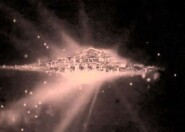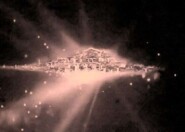По всем вопросам обращайтесь на: info@litportal.ru
(©) 2003-2024.
✖
Science and Technology in the 21st Century. Future Physics & Technology
Автор
Год написания книги
2016
Настройки чтения
Размер шрифта
Высота строк
Поля
Natural Ontology
Natural ontology is the study of the universe as such, the basic features of all the universe, as the nature of force, matter and energy, space and time, natural entities and cause-effect relationships. As an example, mathematical and theoretical physics is to combine physics, mathematics and theoretical ontology of nature. Or, the unity of the all forces of nature is an ontological axiom.
Therefore, despite seeming differences, all the physical sciences are interrelated by the basic principles underlying all natural processes, phenomena and interactions, provided by the principal natural science of physics.
Modern Physics: Its Key Subjects and Principles
“Physics has evolved and continues to evolve without any single strategy”, while its ultimate goal to find a unified set of principles and laws governing force and energy, matter and change, at micro-, meso– and macro-world (Physical Sciences, the New Encyclopedia Britannica, 25, Knowledge in Depth, Chicago-Toronto, Encyclopedia Britannica, Inc., 1994 ).
Generally, the key achievements in physical science lie in the serendipitous and intuitive and ingenious discovering of empirical physical laws and effects, subatomic entities, symmetry principles, conservation laws, or unified force fields (See Supplement 1. All Nobel Prizes in Physics. Available: https://www.nobelprize.org/nobel_prizes/physics/laureates/).
Modern physics was founded as an empirical synthesis of separate sciences: mechanics, optics, acoustics, electricity, magnetism, heat and studies of matter and its properties.
Meantime, the whole idea of physics consisted in the intuitive understanding that different forces of nature and forms of energy are INTERRELATED and INTERCONVERTIBLE, but these universal phenomena have never been expressly formulated as the basic laws of nature. The Faraday’s intuitive belief in the unity of the forces of nature, or that all the forces of nature are but manifestations of a single universal force and must be convertible one into another made possible the classical electromagnetic field theory, the foundation of modern physics.
Modern physics includes the subjects of gravitation, mechanics and sound, particles and atoms, thermodynamics and heat, electricity and magnetism, light and electromagnetic radiation. Its main task is the nature, origin, actions and interactions of force-fields, gravitational, electromagnetic and nuclear, the strong color force between quarks and the weak nuclear interactions, all mediated by the quanta exchange, as vector gauge symmetry bosons.
In all, modern physics viewed as natural science doing the general analysis of nature to understand how the universe behaves, while being in the space of force fields and relying on a few simple laws and principles of nature and the universe.
Among the fundamental principles, causes and theories of the universe there are
unity and diversity,
reversibility and convertibility,
regularity and order,
symmetry and conservation,
change and motion,
relativity and space and time,
mass and energy,
fields and forces,
as well as thermodynamics, equilibrium and nonequilibrium, classic and statistical,
mechanics, classical and statistical, quantum and relativistic, field theory, nonlinear dynamic systems theory, quantum gravity, or theory of everything.
The fundamental axioms and postulates of physics are that “all is relative”, interrelated and interacted, in the physical universe, space and time, mass and motion, energy and force, but the basic principles and laws, as reversibility and convertibility, symmetry and conservation.
The symmetry concept and its symmetry operations, what led the natural philosophy of Newton and defined relativity and quantum theory, are mutually related to the conservation concept and its laws of invariances. Each conservation law (of energy or momentum or mass-energy, quantum numbers or baryon number and lepton number) has a corresponding symmetry, or invariance and uniformity (as time reversal or space inversion or parity and internal symmetries).
And all is generally specified by the algebraic concept of symmetry groups, as Lie and finite groups, going as the foundation for the fundamental theories of modern physics. The idea is to further unify the electroweak forces with quantum gravity forces transmitted by the massless quanta of gravitons.
Most of modern theoretical physics is about the types of symmetries of the Universe and finding the invariants (under all the symmetries) to construct field theories as its general models, like as the Standard model of CPT symmetry. It is to describe the fundamental forces and fields predicting that the exchanged particles called gauge bosons are the fundamental means by which forces are emitted and absorbed.
New Physics: From the Elemental Forces to the Prime Proto Force and Inverted Universe
In modern physics, all of the forces in the universe are based on four fundamental interactions: the strong and weak forces as nuclear forces acting at very short distances and responsible for the interactions between subatomic particles; the electromagnetic force acting between electric charges, and the gravitational force acting between masses, as the Earth-body system.
All of the forces in the universe are tended to be interrelated and united as a single super symmetrical force or supra power, one proto force. The idea of force as pervading all space and matter revolutionized Newtonian physics of classical mechanics. In 1820, Orsted made a critical discovery guided by his firm belief that chemical affinity, electricity, heat, magnetism, gravitation and light are simply manifestations of the basic forces of attraction and repulsion. The unified field theory of a single fundamental force had fully occupied Einstein for 30 years.
The weak and electromagnetic forces are already manifestations or expressions of a more fundamental electroweak interaction. A Grand Unified Theory (GUT) is to relate the electroweak interaction with the strong force of QCD.
Theories of everything are to integrate GUTs with quantum gravity theories, which include string theory, loop quantum gravity, or twistor theory, looking for a graviton or the time-space quantum properties to close the Standard Model list of force particles. Which are force carriers or messenger particles of underlying fields, such as photons mediating the interaction of electric charges, gluons mediating the interaction of color charges, hypothetical gravitons for gravitation, or virtual gauge bosons interacting with matter particles, fermions, attracting and repelling each other.
If electroweak unification occurs just at around 100 GeV and grand unification, at 10
GeV, the unification of the GUT force with gravity is expected at the Planck energy, with a proto force particle, say, the prime force particle of God, at 10
GeV.
Some theories beyond the Standard Model include the modern cosmology forces: an inflationary force and dark energy, a hypothetical fifth force, the search for such a force is an ongoing line of experimental research in physics. In the super symmetry theories, there are scalar fields such as quintessence or moduli, dynamic quantities whose energy density can vary in time and space, acquiring their masses through super symmetry breaking to exchange new forces. New forces might account for the recent discovery of the universe expansion accelerating, or gravitational repulsion, a nonzero cosmological constant, vacuum energy, some changes of general relativity, as well as CP violations, dark matter, dark flow, or dark energy, having a strong negative pressure (acting inversely repulsively), with a view to come to a dynamically reversible cyclic model of the universe.
In fact, there might exist a reversed, or inverted, negative form of matter, with negative gravity, which qualitatively different to antimatter, materials composed of antiparticles, invisible to us as the curving of space, but detectable through its anti-gravitational effects of repulsion. This condition could be referred to as Dark Matter existing in a 5th dimensional hyperspace, being part of space-time's matter and equal in amount to ordinary, baryonic matter. Then inverted space-time becomes negative hyperspace and formally described by imaginary numbers, with all the nonstandard consequences as to its properties and behavior. There is a cosmological speculation as to a real composition of the universe. The standard model of cosmology indicates that dark energy contributes 68.3% of the total energy in the whole observable universe, with its density as low as (~ 7 ? 10
g/cm3), uniformly occupying empty space and having negative pressure (acting repulsively), while the mass–energy of dark matter makes 26.8%, ordinary (baryonic) matter contribute 4.9%, plus the rest components, such as neutrinos and photons, giving in a negligible amount. Other observations are figuring a universe made up 71.3% of dark energy and 27.4% of a combination of dark matter and baryonic matter.
Whatever, knowing the nature of dark energy and dark matter, as the fundamental cosmological constant and quintessence, how it all interacts with the ordinary matter, as subjected to numbers in terms of extension, change, force, mass, energy and radiation, is most critical for a single theory of the universe
Since, ultimately, four or five main force-interactions, strong, electromagnetic, weak, gravitational, and dark, would combine into the proto force, the Faraday’s universal force, in the ToE, like as in a super string theory, at the beginning of the universe (up to 10
seconds after the Big Bang), the four fundamental forces were once a single fundamental force. One might add up here a hypothetical fifth fundamental force of nature, “dark force of dark energy and matter”, theorizing as a force pushing the galaxies aside accelerating the expansion of the universe up to half of the age of the universe (7,5 billion years) (Krasznahorkay, A. J. et al. Physical Review Letters 116, 042501 (2016)).
That might implies that all the fundamental force-interactions might come out as different manifestations of the prime natural force, the prime mover, the first cause of all changes in the universe, including the original event of the hypothetical Big Bang, the singularity referring to the early hot, dense state considered the "birth" of the universe.
So, the final cause of natural science of physics is, in the most general way, to formulate a system of comprehensive principles uniting and explaining all physical phenomena, physical causes and forces, mechanical, gravitational, thermal, electromagnetic, and nuclear forces, weak and strong.
The very universality and convertibility of natural forces and the reversible relationships of physical causes and thence their inherent integrity inspired Faraday, Maxwell and Einstein to seek unification of all the physical processes by a single set of physical laws.
The very universality and symmetry of interactions of natural forces, or reversibility of physical processes, has inspired great physical minds to discover the basic laws of physics, as symmetry principles and conservation laws, and formulate the quantum theory and relativity principle, as Einstein’s matter-energy relationship or space-time relationship.
The very universality of conservation laws of interactions of natural forces, as gravity, nuclear interactions, or electromagnetic interactions, has inspired to discover one of the basic principles of nature, that the laws of physics remains valid in all places and times in the universe. Regardless of all the changes taking place with physical systems, of any scale and complexity, basic physical quantities, as mass, momentum, mass-energy, or baryon number, remain unchangeable or constant.
But, regardless that the great ideas of forcible interactions, process reversibility, energy and effect convertibility have been guiding physical science since its origination, neither has been properly formulated as the fundamental principle and general law of nature and the universe.
To contribute, we introduced the concepts of
universal force-relationship
convertibility laws
reversibility principles
They are introduced as the highly integrative principles of physical sciences, especially, the natural science of physics and theoretical physics, as the most fundamental laws of nature and the universe (Новик И.Б., Абдуллаев А.Ш. "Введение в информационный мир", М. Наука, 1991, in Russian; see Supplement: Encyclopedic Knowledge Base in Physics).







